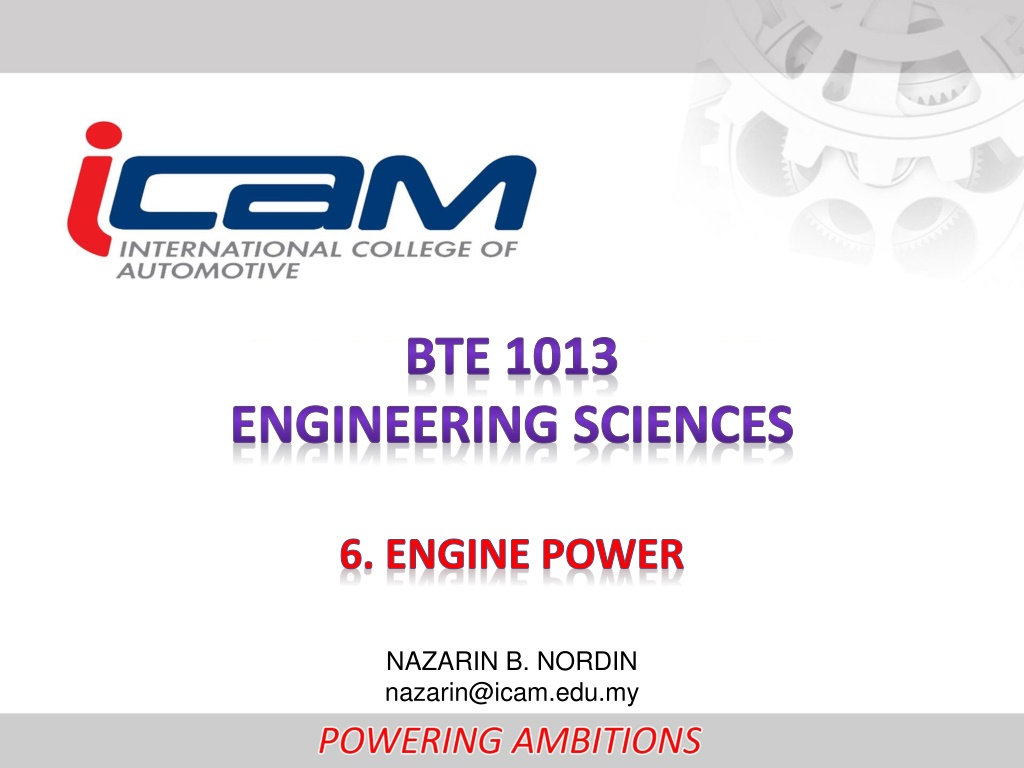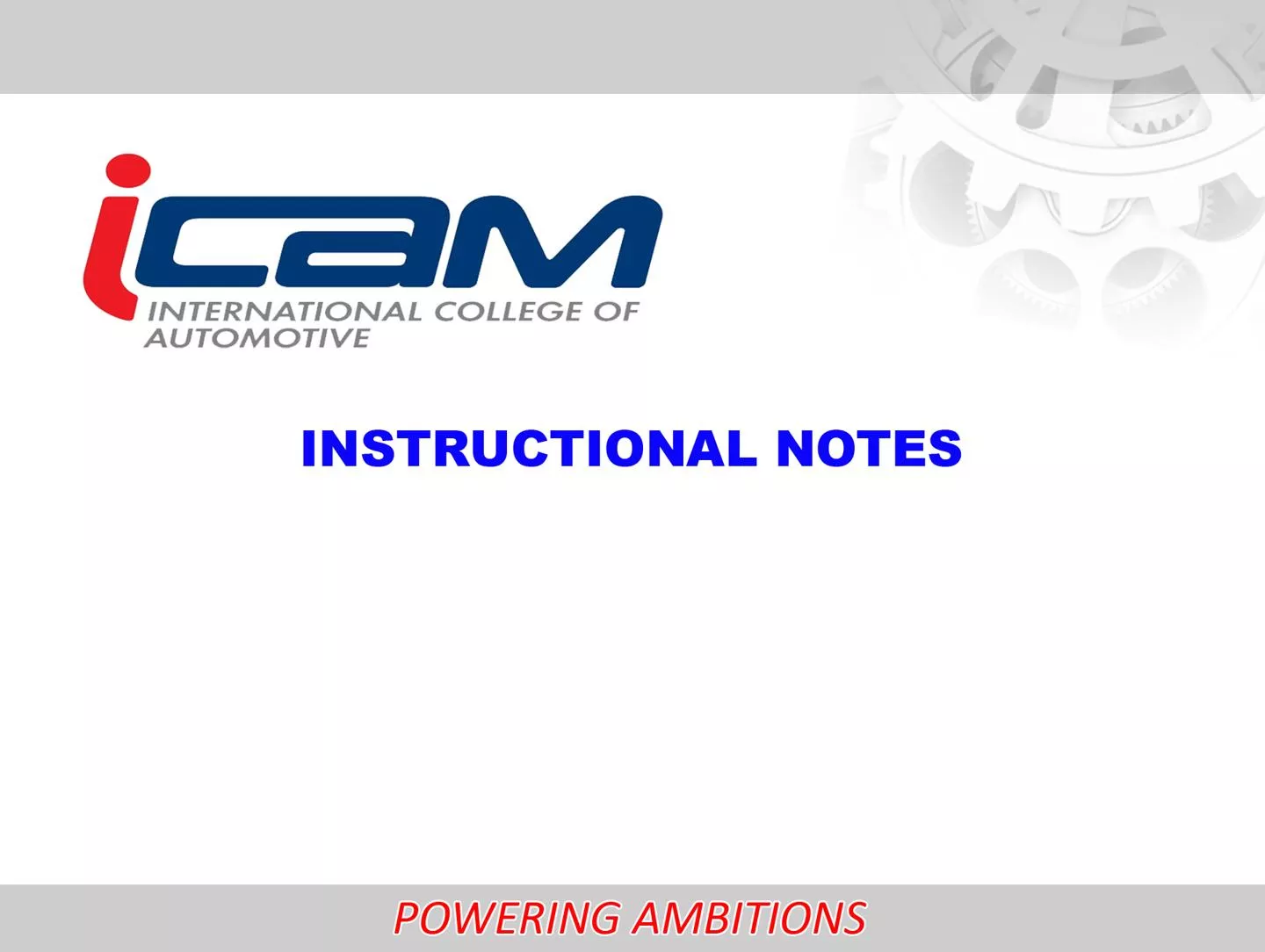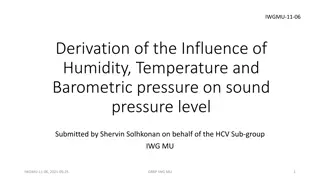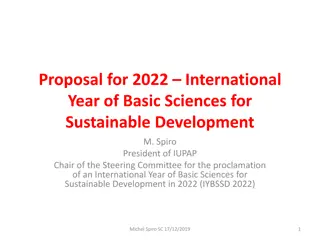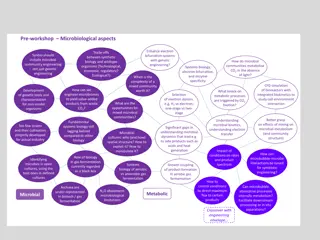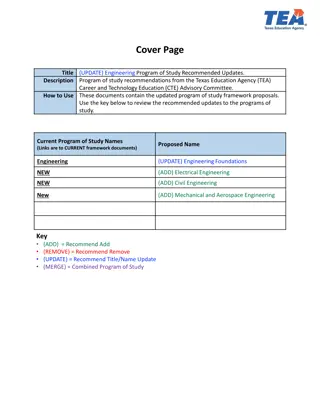BTE 1013 ENGINEERING SCIENCES
Learn about torque, power, indicated power, brake power, volumetric efficiency, thermal efficiency, and mechanical efficiency in engine systems. Understand how indicated power is calculated from pressure measurements inside engine cylinders. Explore examples and solutions for calculating indicated mean effective pressure (imep) and indicated power using relevant formulas.
Download Presentation

Please find below an Image/Link to download the presentation.
The content on the website is provided AS IS for your information and personal use only. It may not be sold, licensed, or shared on other websites without obtaining consent from the author.If you encounter any issues during the download, it is possible that the publisher has removed the file from their server.
You are allowed to download the files provided on this website for personal or commercial use, subject to the condition that they are used lawfully. All files are the property of their respective owners.
The content on the website is provided AS IS for your information and personal use only. It may not be sold, licensed, or shared on other websites without obtaining consent from the author.
E N D
Presentation Transcript
BTE 1013 ENGINEERING SCIENCES 6. ENGINE POWER NAZARIN B. NORDIN nazarin@icam.edu.my
What you will learn: Torque and power Indicated power and brake power Volumetric efficiency Thermal efficiency Mechanical efficiency
Indicated power Indicated power (ip) is the power that is developed inside the engine cylinders. It is determined by measuring the pressures inside the cylinders while the engine is on test, on a dynamometer. Because the pressure varies greatly throughout one cycle of operation of the engine, the pressure that is used to calculate indicated power is the mean effective pressure.
Indicated mean effective pressure (Imep) Because the pressure varies greatly throughout one cycle of operation of the engine, the pressure that is used to calculate indicated power is the mean effective pressure.
Imep Example 6.1 An indicator diagram taken from a single- cylinder 4-stroke engine has an effective area of 600 mm2. If the base length of the indicator diagram is 60 mm and the constant is 80 kPa/mm calculate the indicated mean effective pressure.
Indicated mean effective pressure (i.m.e.p) Solution Indicated mean effective pressure or (imep)= (effective area of indicator diagram/base length of the diagram) constant imep = (600/60) 80 kPa/mm imep = 800 kPa = 8 bar
Calculation of indicated power Indicated power is calculated from the formula Indicated power (ip) = (P l a N)/1000 Unit as kW where P = mean effective pressure in N/m2, l = length of engine stroke in m, a = cross sectional area of cylinder bore in m2, N = number of working (power) strokes per second.
Calculation indicated power Example 6.2 In a test, a certain single-cylinder 4-stroke engine develops a mean effective pressure of 5 bar at a speed of 3000 rev/min. The length of the engine stroke is 0.12 m and the cross- sectional area of the cylinder bore is 0.008 m2. Calculate the indicated power of the engine in kW.
Calculation of indicated power Solution The engine is single-cylinder 4-stroke, so there is one working stroke for every two revolutions. N, the number of working strokes per second N = (3000 60)/2 = 25; P = 5 bar= 500 kPa=500,000 Pa = 500,000 N/m2; l = 0.12 m; a = 0.008 m2. Substituting these values in the formula gives ip = [(500 000 0.12 0.008 25)/1000] kW = 12 kW
Number of working (power) strokes As mentioned, each cylinder of a 4-stroke engine produces one power stroke for every two revolutions of the crankshaft. In a multi-cylinder engine, each cylinder will produce one power stroke in every two revolutions of the crankshaft. A formula to determine the number of power strokes per minute for a multi-cylinder, 4-stroke engine is: number of power strokes per minute = (number of cylinders/2) rev/min
Indicated power Example 6.3 A 4-cylinder, 4-stroke engine develops an indicated mean effective pressure of 8 bar at 2800 rev/min. The cross-sectional area of the cylinder bore is 0.01 m2 and the length of the stroke is 120 mm. Calculate the indicated power of the engine in kW. Solution
Brake power The engine power that actually reaches the output shaft or flywheel of an engine is known as the brake power. It is the power that is measured by a dynamometer and a dynamometer is also known as a brake, hence the term, brake power. The simplest form of dynamometer is shown in the Figure 14.1 on next slide:
Simple dynamometer Work done per revolution of the flywheel = force distance = (W S) 2R joules (W S R also = T the torque that the engine is exerting. By substituting T for W S R the) Work done per revolution becomes = T 2 joules
Brake power Brake power = work done per second = 2 Torque number of revolutions per second =2 x T x n ie. 2 .T.N This is normally written as brake power (bp = 2 TN where N = number of revolutions per second.) When the torque is in newton metres (N m), the formula bp = 2 TN gives the power in watts. As engine power is given in thousands of watts, i.e. kilowatts, the formula for brake power normally appears as: bp = 2 .T.N/1000 kW
Brake power Example 6.4:
Volumetric efficiency Example 6.5 A 4-cylinder 4-stroke petrol engine with a bore diameter of 100 mm and a stroke of 110mm has a volumetric efficiency of 74% at an engine speed of 4000 rev/min. Determine the actual volume of air at STP that flows into the engine in 1 minute. Solution
Thermal efficiency The thermal efficiency of an engine is a term that is used to express the effectiveness of an engine s ability to convert heat energy into useful work. Thermal efficiency is the ratio of energy output of the engine to energy supplied to the engine in the fuel.
Thermal efficiency Example 6.6 During a 10-minute dynamometer test on a petrol engine, the engine develops a brake power of 45 kW and uses 3 kg of petrol. The petrol has a calorific value of 43 MJ/kg. Calculate the brake thermal efficiency.
Mechanical efficiency The mechanical efficiency of an engine is defined as brake power, b.p. indicated power, i.p. X 100 % An engine develops a brake power of 120 kW at a speed of 3000 revs/min. At this speed, the indicated power is 140 kW. Calculate the mechanical efficiency of the engine at this speed.
